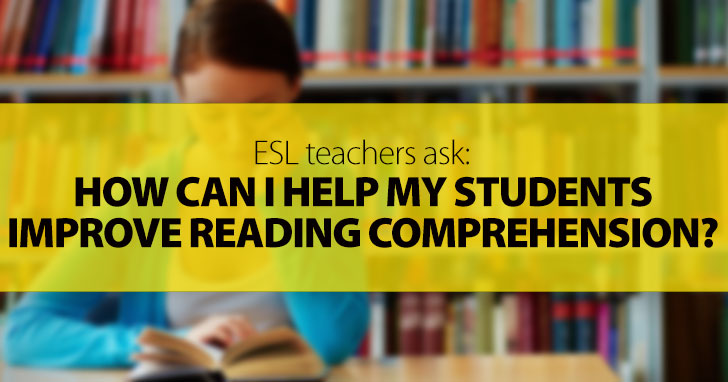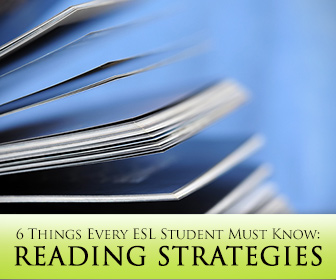ESL Teachers Ask: How Can I Help My Students Improve Reading Comprehension?


But can they really read? Not just pick up a book and read it, but apply reading strategies to a text to obtain the information they need? Passive reading is one thing, and it’s wonderful to hear a student is reading a Harry Potter book or Dan Brown’s latest novel in English. But there comes a time when every ESL student realizes this is not enough and that they must improve their reading skills – and here’s what they must know:

Lots of ESL students pick up a novel and pat themselves on the back for it – I’m reading a book in English! But simply sitting down to read is not enough. It certainly helps – at least they’re making an effort, right? Some simply breeze through an entire chapter to discover they’ve only gotten the gist of it, while others struggle to make sense of each and every sentence, and merely pause to look up words in the dictionary. To really improve reading comprehension, they must be active, not passive, readers and apply reading strategies.
In connection to the first point, if they need to apply reading strategies to improve reading, then they should apply them to shorter texts. Yes, they should read entire novels if they’ve got the time and interest, but they should do it just for fun – the more they read, the better. But it’s very hard to apply reading strategies to novels. They should work with short, focused readings, as well.
Why bother to learn and apply effective reading strategies? When students read in English, they often stumble onto road blocks. They don’t understand. They have to read the same sentence several times and still don’t get the information they need. Why is it important for them to become more intelligent readers? It prepares them to read blog posts, articles, reports and all kinds of documents in a more efficient manner. They might be needing these skills right now on the job, or at the very least will need them in the future.
When students start applying reading skills to texts, they should do so methodically. But the beauty of it is that the more they do it, the easier and more natural it gets. They will get to a point where they are trained to read efficiently and will automatically apply the right strategies to tackle a text. They will know what to do to obtain the information they need.
ESL students might make the mistake of sitting down to read a report cover to cover when it may not be necessary. Each text, each document has to be approached differently. Good reading is not reading every single word. Good, efficient reading allows you to obtain the information you need. Some texts might have to be scanned, others skimmed, and yet sometimes all we need to do is read the headline.
One of the biggest hurdles students encounter are words they have never heard before. In order to effectively learn new words, there is a whole other set of strategies specifically aimed at understanding new vocabulary.
Do you teach specific reading strategies to your ESL students? How much time do you devote to promoting solid reading practices? Share below!